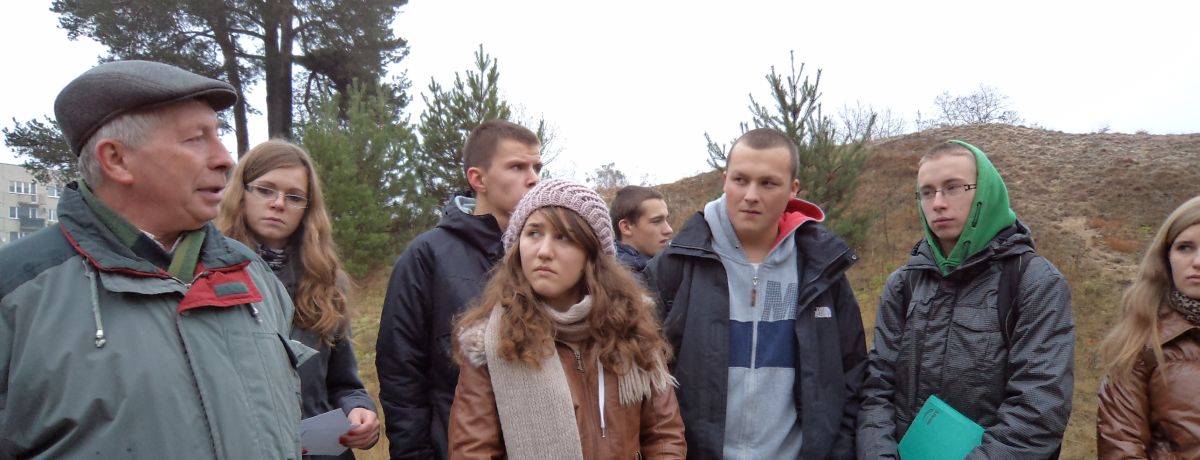| 2011 | 2017 |
Kozienice
Kozienice, Stefan Czarniecki High School


| 2011 | 2017 |
What is this town famous for? Some will immediately think of the vast forest, the horse stud, Bogusław Klimczyk, the power plant or the palace where the Town Hall is located today; others will instantly think of Kozhnitz rebe, the Kozhnitzer Maggid, that is the famous Hasidic Rebbe Yisroel Hopsztajn whose grave at the local cemetery is visited still today. Are these two towns or one? Must they be remembered separately?
Yet, before the war, in 1939 Jews constituted 52% of the Kozienice’s population. They were members of voluntary fire brigade and Crafts Guild among others. The poor from Browarna Street were mainly into shoemaking. There were also those who worked in tribunal or were merchants. They had a print shop, bookstore and brewery. Cechman Brewery. Where it used to stand, now is a supermarket Biedronka. Apparently one could by “on credit” there. And where the bakery is now at Radomska Street, there was a Dancygier’s bakery once. A photography shop at a corner of Warszawska and Maciejowska Streets before the war was owned by Chaim Berman.
Berman photographed everybody. Jews, Poles, Germans. Rich and poor. Young and old. Women, men and children. Shoemakers and bakers.
Photographs for documents, photographs at special occasions. Weddings, First Communions, funerals and baptisms. He photographed Jews with bands and photographed the images of the ghetto. He died of typhus just before the end of war.
The photographs were found at an attic at Lubelska Street in 1944, where his workshop had been moved. But only in the ‘90 they were shown to public. Based on the photos Alina Skibińska and Anka Grupinska with Forum for Dialogue organized the exhibition shown in Kraków, Łódź and Kozienice. For a moment, some were named, remembered.
This time Forum for Dialogue came to Kozienice with School of Dialogue workshops. During workshops led by Małgorzata Nowicka and Olga Głowacka, students from high school in Kozienice asked many questions. One after another, and another and one more. About kosherness and its rules. Food, alcohol, what for and why, why they can’t do as we do. About the calendar, about holidays. About the war, the ghetto, history and the past. About who they were, what they did.
Where it all stood and if it is still standing, whether it was before the thing that it is now. Together with the educators they talked about multiculturalism, tolerance and diversity. Who they are, how they are and what their attitude is. They were curious and wanted to know more.
At the end of the day, it is worth to know that Berman’s brother, Zelik, opened a movie theater “Czajka” in an old firehouse at Sienkiewicza Street. It was rather called Szopa. Theater groups performed there. Showed their skits and songs, poems and monologues. Butcheries were at 15 Stycznia Square, and mikvah built in 1815 at Bohaterów Getta Square. At the beginning of war, Jews were resettled to the east side of the town – where the ghetto was set up. At Radomska, Lubelska, Magietowa, Targowa, Brudna, Czwartek and Szpitalna streets. Later, Jews from the ghetto were taken to Treblinka, and bodies of those who had died in the ghetto, were buried in a mass grave at the Jewish cemetery at Radomska Street. In fact, students truly devoted most of their attention to the dramatic time of the war.
They met with Jakub Fersztand who told them about the German occupation. When the war started, he was a child. They also met with Krzysztof Zając from the Town Hall who himself had a lot of experience in searching information about the Jews from Kozienice. He offered help in preparation for the walking tour, to which he was invited to. Young people met with families, with the elders. They searched for information, for someone who remembers something and could tell them about it. About the war, about Kozienice before 1939. Where the synagogue used to stand, and where the butcheries stood. They went to the library where they search in every book, page after page. They worked in groups, they discussed a lot. They found out who lived in the house at Radomska Street, at what number, who the neighbors were. They prepared a walking tour with a map on which they marked still tangible places but also those with no trace. They talked about the war, the ghetto and persecutions. This part was the most important for them.
I especially liked the tour of Kozienice. We visited streets that were Jewish before the war. The most interesting point was kirkut, the Jewish cemetery. No one of us had ever visited the place, so we listened to the man talking about Jews and their lives with interest.
Karolina, workshops participant

School:
Stefan Czarniecki High School
Students:
2nd year students
Teacher:
Małgorzata Kuśmierczyk-Balcerek
Expert:
Krzysztof Zając
Trenerki:
Olga Głowacka, Małgorzata Nowicka
Project co-financed from the funds granted by the Taube Foundation for Jewish Life & Culture.

In appreciation to Friends of the Forum for supporting the School of Dialogue educational program.
